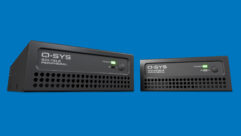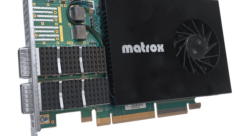
Smaart I-O
Aug 1, 2005 12:00 PM,
By John McJunkin
Package provides comprehensive and accurate audio signal measurement.
SIA’s Smaartlive application has become a tremendously popular audio signal measurement tool for live sound engineers, largely due to the simplification it provides in tuning systems to their acoustical environments. Until recently, the gathering of all the accoutrements to use Smaartlive was incumbent upon the engineer.
In addition to a computer with the SIA software installed, a quality interface was necessary to get signal in and out of the computer, not to mention Y-cables. A small mixer was also recommended. The engineer was also required to procure a good-quality microphone with the flattest possible frequency response. Not anymore. Enter Smaart I-O. This kit from SIA includes a high-quality interface, a very flat microphone (with a clip), all necessary cabling, and computer software with which to control the interface. With Smaart I-O, it’s still nice (although not necessary) to have a small mixer to simplify operation. I got to play with a Smaart I-O kit, and frankly, I don’t know how I’ve gotten along without one. Let’s examine this system and its uses.
THE BOX
The Smaart I-O box itself is a 1/3RU-width black box. On the back panel, there are XLR connectors for Mic In and Mono Out. Between these two is the Line In connection, one of the clever Neutrik connectors that accepts either an XLR or a 1/4in. TRS. There is also a USB connector on the back panel to hook up with your computer. On the front panel is the unit’s display, with Signal and Clip LEDs for both mic and line inputs. The mic input part of the display also has an LED to indicate 48V phantom power. The line input has an LED to indicate when the unit is in Loop mode, meaning that the output signal is looped directly back into the line input. There is also an LED to indicate successful USB connectivity, which is important because the unit is USB-powered. The included microphone is an omnidirectional electret condenser mic similar to other analysis mics.
THE SOFTWARE
The interface box ships with SmaartRTA, a watered-down version of Smaart. Frankly, although this application’s feature set is slimmer than the full-tilt version, it’s powerful in its own right. I played a bit with both versions. Smaart is intended to do quite a number of things — its spectrum mode enables RTA, SPL metering, SPL logging, and spectrograph display, among others. Its transfer function mode enables measurement of speakers, EQs, and complete systems to establish whether a device’s output is identical to its input. Via this mechanism, entire systems are easily optimized and tuned for their environments. Smaart’s impulse mode enables impulse response measurement and configuration of speaker delays, for example. I had been exposed to Smaart prior to receiving the review unit, and I was aware of the power of the system, but I was particularly thrilled with the simplification of the process that the I-O box provides. I dug in and played with numerous functions of the system to put it through its paces.
THE SYSTEM IN USE
I like to use the RTA function for monitor-wringing. By looking visually at the frequencies that tend to run, it’s much easier to eliminate them, particularly with today’s surgical EQs. I also appreciate the ability to study the spectral content of a musical signal. Smaart recommends a method for quick and dirty SPL calibration, which is quite accurate. For me (I don’t own a calibrator), this is perfectly adequate. It’s nice to be able to show a venue operator the SPL. For industrial applications, Smaart’s SPL logging function is very nice. SIA points out, rightfully so, that RTA alone simply does not allow for accurate system optimization. That’s why it makes transfer function measurement available.
Smaart’s transfer function is basically a dual-input FFT that enables a comparison between two FFT analyses. I experimented quite a bit with this feature. I looked at the frequency response of several devices (EQs, dynamics processors, etc.) by connecting Smaart’s signal generator to the input of the device (and also Smaart’s own input, via the “loop” function) and the device’s output to Smaart’s input. This yielded a literal display of frequency response in realtime. Since Smaart can provide any number of useful test signals and even user-determined loops, you can really get an idea of what any particular device is doing to your signal from a spectral standpoint. I found this incredibly useful.
In order to use Smaart’s transfer function to optimize a system in a particular room, you must compensate for propagation delay. This is an area where Smaart really shines, going way beyond a simple RTA or even dual-input FFT. After connecting a microphone to Smaart’s input, I clicked on the Auto Sm button in Smaart’s GUI. This automatically determines the distance in milliseconds between the measured speakers and the microphone. It asked me if I wished to insert delay, to which I responded yes. This action resulted in Smaart’s compensating for the distance involved. At that stage, I began capturing snapshots of the transfer function of the system. Smaart allows you to store up to 40 instantaneously and then save them to disk, which enables storage of an infinite number of snapshots.
The next step for me was to equalize the system, and since I was using an analog equalizer, I reset the delay time to zero (Smaart’s automatic delay compensation is necessary with digital devices) and clicked the Swap button in Smaart’s GUI, which had the effect of inverting the measured frequency response of the EQ. This made it easy for me to visually match the inverted EQ response to the snapshot of the transfer function. While it’s virtually impossible to achieve a perfectly flat response, I was able to get quite close.
Smaart also displays phase, and by delaying certain bands, significant improvements in phase coherency can also be achieved. For instance, if the low mids are arriving 8ms too soon, they may be delayed back (which has the de facto effect of “physically moving” that band backwards). Upon delaying that band by 8ms, those frequencies will thus arrive as part of fully coherent wavefront at the listener’s ears. This is not a new idea, but Smaart lets an engineer be far more precise about the process than the trial-and-error methods of yesteryear.
As I said before, I don’t know how I got along without Smaartlive. I am using it to see what various devices do to my signals, and even to establish very accurate phase coherency in stereo microphone pairs (drum overheads, in particular — hat tip to Robert Scovill). If there is any reason whatsoever that you need an extremely accurate visual display of spectral dispersion, transfer function, and SPL, among other things, SIA-Smaart should be on your short list. And now that Smaart I-O is available, it abundantly simplifies the use of Smaart, making it even more worthy of consideration.
PRODUCT SUMMARY
Company: SIA Software www.siasoft.com
Product: Smaart I-O
Pros: High-quality interface that vastly simplifies Smaart operation.
Cons: Levels, phantom power, and loop mode can be controlled only by software.
Applications: Audio signal testing and measurement
Price: $1,590
SPECIFICATIONS
Two Input Channels with 61dB of variable gain in 1/2dB steps:
Mic Input Balanced XLR female connector with switchable 48V phantom power
Line Input Balanced 1/4in. XLR Combo connector
Mono Output Single, via balanced XLR male connector with switchable internal loop-back to Line input channel
24-bit, 48kHz ADC and DAC
Recommended System Configuration
PC with USB port (required)
Microsoft Windows 98, NT 4, 2000, ME, XP, or higher
800MHz or faster Intel Pentium or compatible microprocessor
256MB to 512MB system RAM
1024×768, 32k colors SVGA display
Minimum System Configuration
PC with USB port (required)
Microsoft Windows 98, NT 4, 2000, ME, XP, or higher
300MHz or faster Intel Pentium or compatible microprocessor
32MB to 64MB system RAM
800×600, 256-color VGA display
John McJunkinis the principal of Avalon Audio Services in Phoenix. He provides recording and sound reinforcement services, consults in the development of a variety of systems, and is involved in audio education with the Conservatory of Recording Arts & Sciences.










